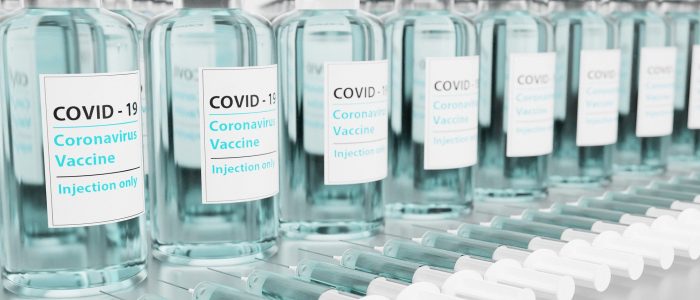Getting the vaccine in perspective: The “Big Four” challenges

I often have colleagues say to me that, six months ago, everyone was asking why the COVID-19 vaccine was taking so long. Yet here we are, with nearly fifteen million people given their first dose, and now people are asking, “Why it was developed so quickly? Surely that means it’s unsafe?” “‘Twas ever thus with vaccines” is my default response, after many years’ work on this.
We need a proper and nuanced debate about the vaccines. And in the speed and rush to move, that hasn’t always been visible. And it’s nobody’s fault. The fact that we have gone from no vaccine to three (and counting) in under a year remains one of the greatest scientific achievements of the last eighty years. And the fact that so many have had their first dose is one of the greatest logistical triumphs I will live to see, despite the challenges.
But while this is going on, let’s take stock of what we know about vaccines, what this means for the next year, and what this might have to do with our faith communities.
So first, let’s understand the vaccine’s place in an exit strategy for COVID-19. Unlike many diseases, it seems we’re still uncertain about whether the vaccine eliminates transmission. It does, however, prevent serious illness and death. So, currently, it’s a bit like a seatbelt – it may not prevent the accident happening, but could save your life. Let’s take that as a victory and not a reason to quibble.
Second, this virus will be around for some time. It’s not going away any time soon. And whilst a virus circulates, it does what viruses do: variants emerge because of biological pressure on the virus to become as efficient as possible at replicating itself. The B.117 variant (otherwise known as the “Kent” variety) is now so prominent, it is essentially the predominantly naturally-occurring or “wild” type.
So we will be living with SARS-CoV-2 circulating for some time – not eradicating it like we did with some other viruses. That means we need to think carefully about our strategies for a virus we haven’t quite seen anything like before. What should our approach be, then?
Well, first, we need to ditch “all-or-nothing” thinking – the idea that test, trace and isolate must be utterly perfect before lockdown, or the idea that lockdown is a perfect tool. Why? Because where we have had major successes in the past with diseases, it has been on the basis of multiple, imperfect strategies that all make a bit of a contribution, rather than a “silver bullet”. Penicillin needed nutrition and nursing care alongside it for people to recover from an otherwise deadly infection.
Combination Prevention, not ‘all or nothing’

Image: “The Swiss Cheese Respiratory Virus Defence” by Ian M. Mackay, licensed under CC BY 4.0.
So ditch “all or nothing” for the idea of Combination Prevention – a series of interventions, all of them by themselves imperfect but together effective. It has served well in many diseases. For SARS-CoV-2 that means physical distance + face coverings + test, trace and isolate + vaccines + safe working procedures. No one is sufficient on its own, all are necessary.
So the vaccine is one part of our effort, not the whole thing. Even if it does prove that the vaccine stops transmission, the existence of those pesky variants may well mean the vaccine will be updated for new variants and populations re-vaccinated annually. This virus plans to outstay its welcome, and we need to have plans ready for that.
That also means we need to have as many people take up vaccination as possible. A large slice of the population unvaccinated means the virus will still kill and harm in those populations, and means our success in negotiating how we work, live and study while SARS-CoV-2 remains a reality has an unacceptably-large Achilles’ heel.
So how do we make the vaccine as effective as possible? Well, we have decades of knowledge about making vaccines punch above their weight, and Directors of Public Health are your go-to anoraks on this. Here are some key principles and actions:
First, realise that any large healthcare push creates inequalities because of the size of the task. That’s not a criticism, it’s just fact: those with fewest barriers to care find it easiest to take up. That’s one way of expressing the inverse care law that governs inequity in healthcare.
Focus on the ‘Big Four’
Second, combatting this depends on what I call ‘The Big Four’ sets of issues being resolved. Each set is complex and needs careful thinking through. But we have decades of experience on this, so we need to learn from what works already, not re-invent the wheel.
- Structural Barriers to Equitable Access – is the centre accessible? How are people reminded? Are NHS and employer lists accurate? What about folk not registered with GPs?
- Hesitancy – this is equally complex, from questions of safety to cultural issues, ethical acceptability of the vaccine and attitudes to health. There is a wealth of knowledge and research on this. You can read a summary of our local research on this here.
- Data – granular data which lets us pinpoint inequalities in take up and monitor them is crucial. It’s coming, but it’s a work in progress.
- Disinformation – this is one area where you need to be really careful. The best way to combat this is to be confident about the facts and articulate them calmly. Don’t get drawn into debate about the conspiracy theory du jour. You won’t win.
Recently, several countries have moved beyond vaccine hesitancy, to the concept of “vaccine confidence”. Staff and community leaders with whom people can identify – “people like me” – who are confident in giving accurate, dispassionate information on vaccines, can significantly reduce hesitancy, answer questions and increase uptake. This is also where faith groups, and leaders, can help: put pro-active, visible, confident, knowledgeable champions in communities and take-up will improve.
We’ve learned through this pandemic that faith groups are indispensable to public health. We have also learned that Combination Prevention is the best viable strategy going forward for now. We now have the opportunity to show that faith groups, by creatively taking on “The Big Four” alongside the NHS and local authorities, can help create vaccine-confident communities.
If we want to recover and build back fairer, we need to create vaccine-confident communities and services. Faith groups can help.
Prof. Jim McManus is Vice President of the Association of Directors of Public Health and Director of Public Health for Hertfordshire County Council. He also sits on FaithAction’s Advisory Group.
In January, the Ministry of Housing, Communities and Local Government announced its Community Champions programme, a £23 million fund for councils and voluntary groups to support ongoing work around vaccine uptake. Community Champions will support their local communities, providing advice on the vaccination programme, identify barriers for people accessing vital health messaging and promoting COVID-19 messages.
To find out more about the programme, and how you may be able to get involved, please email [email protected]


